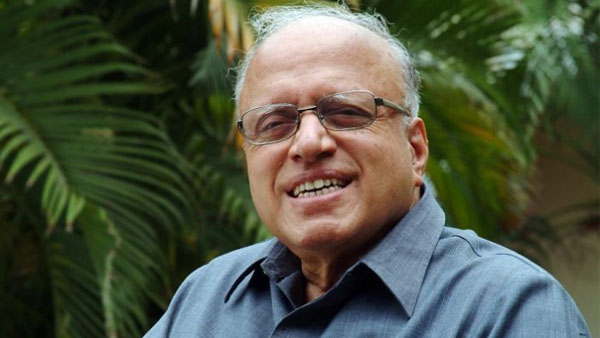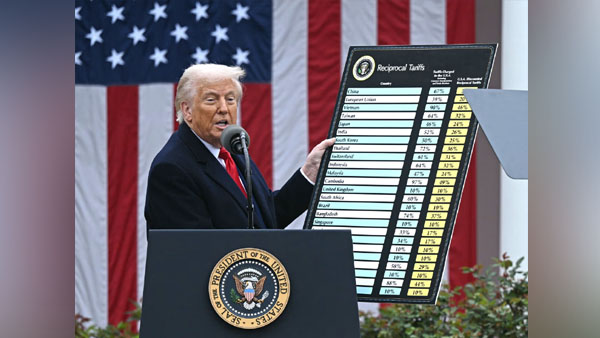By Satyabrat Borah
India in the mid-20th century was a nation teetering on the edge of hunger. The shadow of famine loomed large, and the memory of the Bengal famine of 1943, which claimed millions of lives, was still fresh in the collective psyche. The country, newly independent, faced the daunting challenge of feeding a population that was growing faster than its agricultural output. Food imports were a necessity, but they came at the cost of national pride and economic strain. It was in this crucible of crisis that a soft-spoken scientist, armed with a vision and an unwavering commitment to his homeland, stepped forward to rewrite India’s destiny. That man was Monkombu Sambasivan Swaminathan, a name now synonymous with the Green Revolution and the architect of India’s journey to food self-sufficiency. His life and work stand as a testament to the power of science, perseverance, and a deep-rooted love for one’s people.
Born on August 7, 1925, in Kumbakonam, Tamil Nadu, Swaminathan grew up in a family that valued education and service. His father, a surgeon and freedom fighter, instilled in him a sense of duty toward the nation. Young Swaminathan was drawn to agriculture, a choice that puzzled many in an era when medicine or engineering were the preferred paths for bright minds. Yet, his decision was not born of whim but of a profound awareness of India’s agrarian roots and the suffering of its farmers. The Bengal famine, which he witnessed as a young man, left an indelible mark on his conscience. While studying for his bachelor’s degree in zoology at the University of Kerala, he resolved to dedicate his life to ensuring that no Indian would ever again die of hunger. This resolve led him to switch from a promising career in the civil services to agricultural science, a field where he believed he could make a tangible difference.
Swaminathan’s journey took him to the Indian Agricultural Research Institute (IARI) in New Delhi, where he honed his expertise in genetics and plant breeding. He pursued further studies in the Netherlands and at Cambridge University, earning a Ph.D. in genetics. His global exposure equipped him with cutting-edge knowledge, but it was his return to India in 1954 that set the stage for his monumental contributions. At the time, India’s agricultural landscape was bleak. Traditional farming methods, coupled with erratic monsoons and poor infrastructure, meant that crop yields were abysmally low. Wheat and rice, the staples of the Indian diet, were in short supply, and the nation relied heavily on imported grain, particularly from the United States under the PL-480 program. The term “ship-to-mouth” became a humiliating descriptor of India’s dependence on foreign aid.
Swaminathan saw the solution not in temporary fixes but in a radical transformation of Indian agriculture. His vision was rooted in the application of science to farming, specifically through the development of high-yielding crop varieties. In the early 1960s, he began collaborating with international scientists, including the American agronomist Norman Borlaug, whose work on dwarf wheat varieties had shown promise in Mexico. Swaminathan recognized that these varieties, which were shorter, sturdier, and capable of producing more grain per plant, could be adapted to Indian conditions. He spearheaded efforts to crossbreed these foreign varieties with local strains, ensuring they were suited to India’s diverse soils and climates. The result was a series of high-yielding wheat varieties that could withstand lodging (the tendency of tall plants to collapse under the weight of heavy grain) and respond well to fertilizers and irrigation.
The introduction of these varieties marked the beginning of what would later be called the Green Revolution. Swaminathan’s work was not limited to the laboratory; he understood that scientific breakthroughs were meaningless unless they reached the fields. He worked tirelessly to bridge the gap between research and practice, collaborating with farmers, extension workers, and policymakers to ensure the adoption of new technologies. Demonstration plots were set up across the country to showcase the potential of high-yielding varieties, and farmers, initially skeptical, were won over by the dramatic increase in yields. By the late 1960s, wheat production in India had soared, transforming states like Punjab, Haryana, and Uttar Pradesh into the breadbasket of the nation. Rice, too, saw significant improvements, with Swaminathan’s team developing high-yielding varieties like IR-8, often dubbed “miracle rice.”
The impact of the Green Revolution was nothing short of transformative. Between 1965 and 1970, India’s wheat production nearly doubled, from 12 million tonnes to over 20 million tonnes. Rice production followed a similar trajectory. The country, once dependent on food imports, achieved self-sufficiency in food grains by the early 1970s. The specter of famine receded, and India emerged as a nation capable of feeding its people. This was no small feat in a country where agriculture was the backbone of the economy, employing over 70 percent of the population. The Green Revolution not only ensured food security but also boosted rural incomes, reduced poverty, and laid the foundation for economic growth. Swaminathan’s contributions were recognized globally, earning him accolades such as the Ramon Magsaysay Award in 1971 and the World Food Prize in 1987, often considered the Nobel Prize for agriculture.
Yet, Swaminathan’s legacy is not without its complexities. The Green Revolution, while a triumph, brought challenges that he himself acknowledged. The heavy reliance on chemical fertilizers and pesticides led to environmental degradation in some areas, depleting soil fertility and contaminating water sources. The focus on high-yielding varieties also narrowed the genetic diversity of crops, making them more vulnerable to pests and diseases. Moreover, the benefits of the revolution were not evenly distributed; wealthier farmers with access to irrigation and capital reaped greater rewards, while small and marginal farmers often struggled to afford the inputs required for the new technologies. Swaminathan, ever the visionary, was quick to address these issues. He advocated for sustainable agriculture, emphasizing the need to balance productivity with ecological health. His concept of the “evergreen revolution” called for agricultural practices that would ensure long-term food security without compromising the environment or social equity.
Beyond his scientific contributions, Swaminathan was a champion of farmers’ rights and gender equality in agriculture. He recognized the critical role of women in farming, particularly in rice cultivation, and pushed for policies that empowered them. He also established the M.S. Swaminathan Research Foundation in 1988, a non-profit organization dedicated to sustainable agriculture and rural development. Through the foundation, he promoted innovations like bio-villages, where communities adopted eco-friendly technologies, and worked to preserve traditional knowledge alongside modern science. His advocacy extended to global platforms, where he called for fair trade policies and the protection of smallholder farmers in developing nations.
Swaminathan’s life was a blend of intellectual rigor and deep compassion. He remained a humble figure, often shunning the spotlight and crediting his team and the farmers for the success of the Green Revolution. His ability to marry science with social purpose made him a rare figure in a world often divided between theory and practice. Even in his later years, he continued to inspire, mentoring young scientists and engaging with policymakers to address emerging challenges like climate change and food insecurity. His passing in 2023 was mourned not just in India but across the world, as tributes poured in for the man who fed a nation.
The story of M.S. Swaminathan is a reminder of what one individual, armed with knowledge and purpose, can achieve in the face of seemingly insurmountable odds. His work transformed India from a nation on the brink of starvation to one that could stand tall with dignity. It is a legacy that continues to nourish millions, not just through the grains that fill their plates but through the hope that science, when guided by a humane vision, can solve humanity’s greatest challenges. As India navigates the complexities of the 21st century, Swaminathan’s life offers enduring lessons: that progress is possible, that sustainability is non-negotiable, and that the heart of a nation lies in the fields where its farmers toil.




